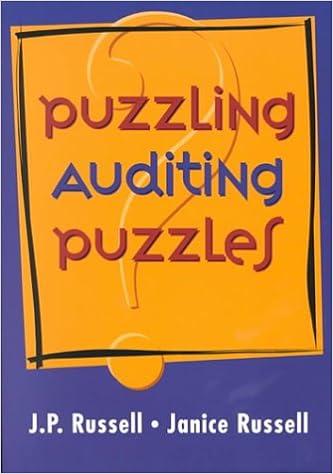For nearly 20 years, Specialized Coatings has provided painting and galvanizing services for manufacturers in its region. Manufacturers of various metal products have relied on the quality and quick turnaround time provided by Specialized Coatings and its 20 skilled employees. During the last year, as a result of a sharp upturn in the economy, the company's sales have increased by 30% relative to the previous year. The company has not been able to increase its capacity fast enough, so Specialized Coatings has had to turn work away because it cannot keep up with customer requests. Top management is considering the purchase of a sophisticated robotic painting booth. The booth would represent a considerable move in the direction of automation versus manual labor. If Specialized Coatings purchases the booth, it would most likely lay off 15 of its skilled painters. To analyze the decision, the company compiled production information from the most recent year and then prepared a parallel compilation assuming that the company would purchase the new equipment and lay off the workers. Those data are shown below. As you can see, the company projects that during the last year it would have been for more profitable if it had used the automated approach. Current Automated Approach Approach Sales $2,200,000 $2,200,000 Variable costs 1,650.000 1.100.000 Contribution margin 550,000 1,100,000 Fixed costs 412.500 891.000 Net income $137,500 $209,000 X Your answer is incorrect Compute the contribution margin ratio under each approach. Current approach Automated approach 0.5 % Contribution margin ratio 0.25 % Your answer is correct. Compute the break-even point in sales dollars under each approach. Current approach Automated approach $ 1650000 1782000 Break-even points in sales dollars $ X Your answer is incorrect. Using the current level of sales, compute the margin of safety ratio under each approach. Current approach Automated approach Margin of safety ratio 0.25% 0.19% X Your answer is incorrect. Determine the degree of operating leverage for each approach at current sales levels. (Round answers to 2 decimal places, eg.2.25) Current approach Automated approach Degree of operating leverage How much would the company's net income decline under each approach with a 10% decline in sales? (Round answers to 1 decimal place, c.8. 22.5%) Determine the degree of operating leverage for each approach at current sales levels. (Round answers to 2 decimal places, eg. 2.25.) Current approach Automated approach Degree of operating leverage How much would the company's net income decline under each approach with a 10% decline in sales? (Round answers to 1 decimal place, c.8. 22.5%) For a 10% drop in sales net income would increase by For a 10% drop in sales net income would increase 4 by % for Current approach % for Automated approach X Your answer is incorrect. At what level of sales would the company's net income be the same under either approach? Net income would be equal to $ sales










